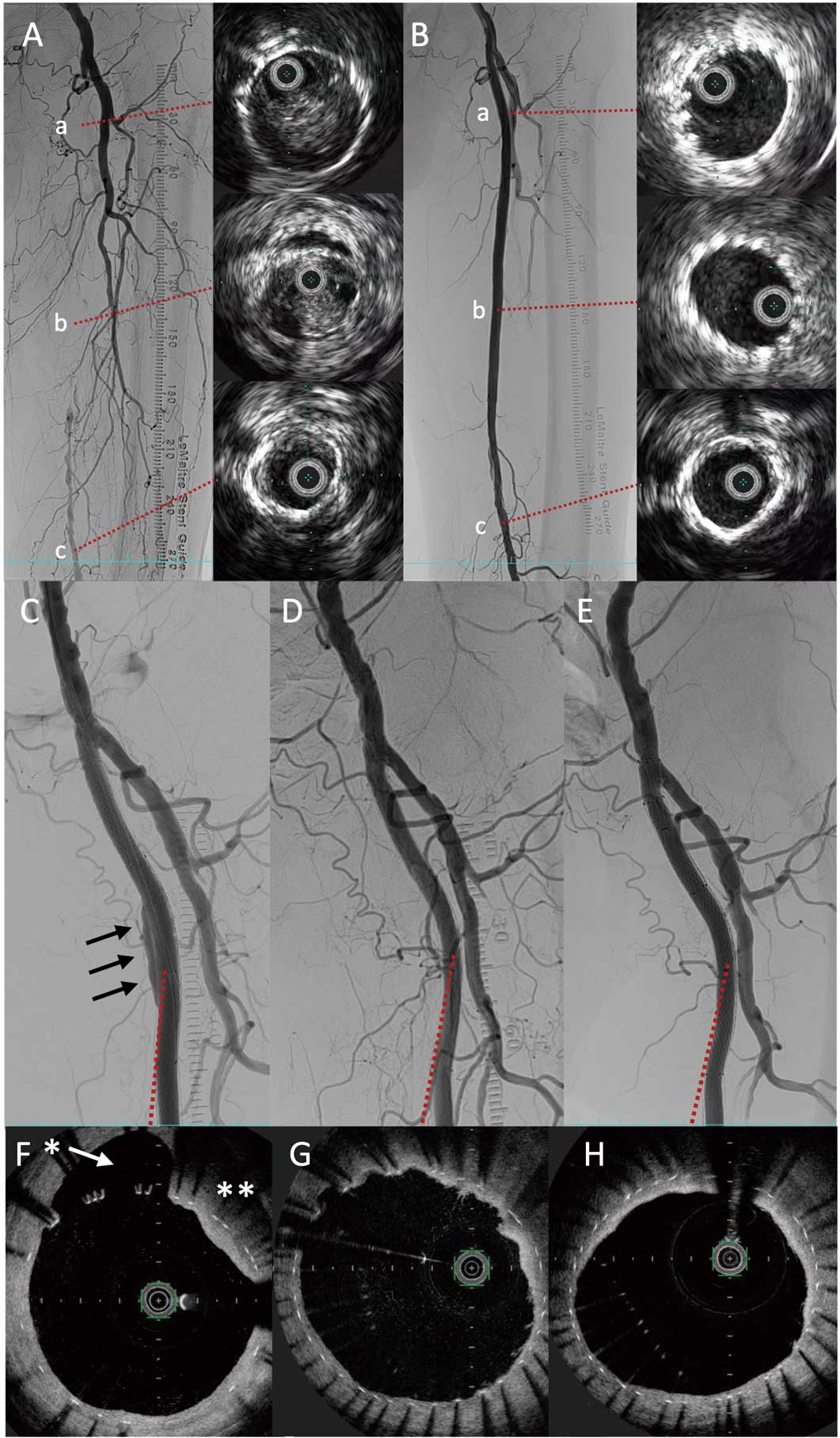2023 Volume 87 Issue 4 Pages 580-
2023 Volume 87 Issue 4 Pages 580-
An 80-year-old man with intermittent claudication underwent implantation of a fluoropolymer-based drug-eluting stent (FP-DES) (Boston Scientific, Marlborough, NA, USA) for superficial femoral artery occlusion. Angiography was repeated 19 months later due to recurrence of rest limb pain. Aneurysmal degeneration (AD) was diagnosed in combination with angiography and optical frequency domain imaging (OFDI). Angiography was conducted again 30 months later due to recurrence of symptoms, but showed AD disappearance. However, inadequate stent coverage remained on OFDI. Finally, angiography and OFDI confirmed AD disappearance and adequate stent coverage after 37 months (Figure). During this period, after continuing dual antiplatelet therapy for 9 months, he was changed to single antiplatelet therapy.

(A,B) Angiography shows superficial femoral artery occlusion and implanted fluoropolymer-based drug-eluting stent. Intravascular ultrasound confirmed the guidewire partially crossing the subintimal space. (C–E) 19 months later, aneurysmal degeneration (AD) was observed (C: arrows). However, angiography at 30 and 37 months confirmed disappearance of AD. (F) Optical frequency domain imaging (OFDI) at 19 months: cavity formation involving the stent struts can be seen (*). The tissue behind the struts has heterogeneous low signal intensity (**), and appears to be organizing thrombus-like tissue. (G) OFDI at 30 months; the cavity has disappeared, but some stent struts are malposed. (H) OFDI at 37 months: stent struts are well apposed and covered with homogeneous high-intensity neointima.
FP-DES has demonstrated good clinical results, but there remain concerns about AD because polymer-induced inflammation and hypersensitivity vasculitis are associated with AD.1 How this phenomenon will change during the chronic phase is still unclear. As for the mechanism of AD healing spontaneously, it is conceivable that thrombus fills the gap between AD and the stent. Treatment may not be always necessary even if AD is observed.
This report was conducted according to the tenets of the Declaration of Helsinki.
Institutional Review Board in Kishiwada Tokushukai Hospital. Reference number: +81-72-445-9915.